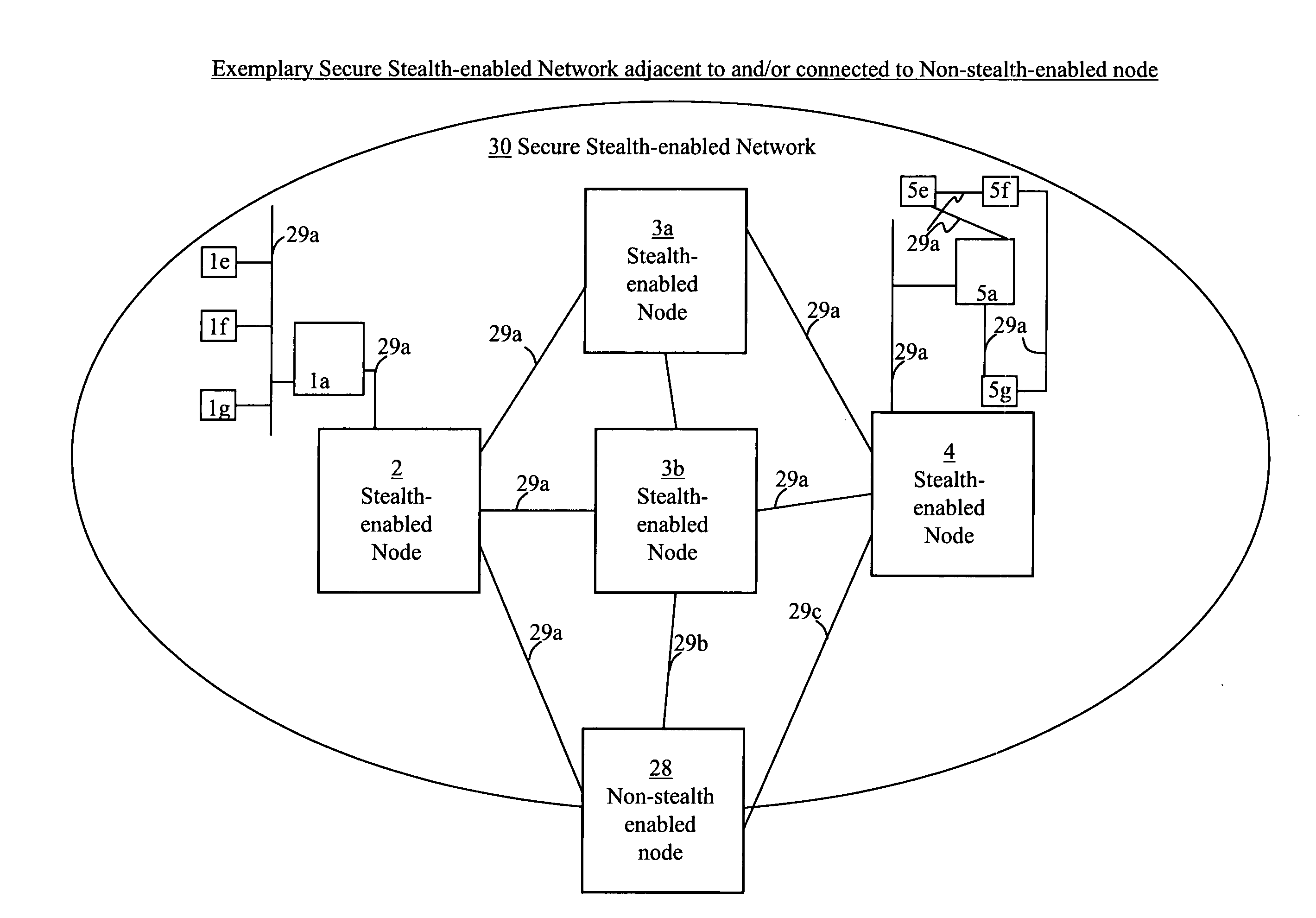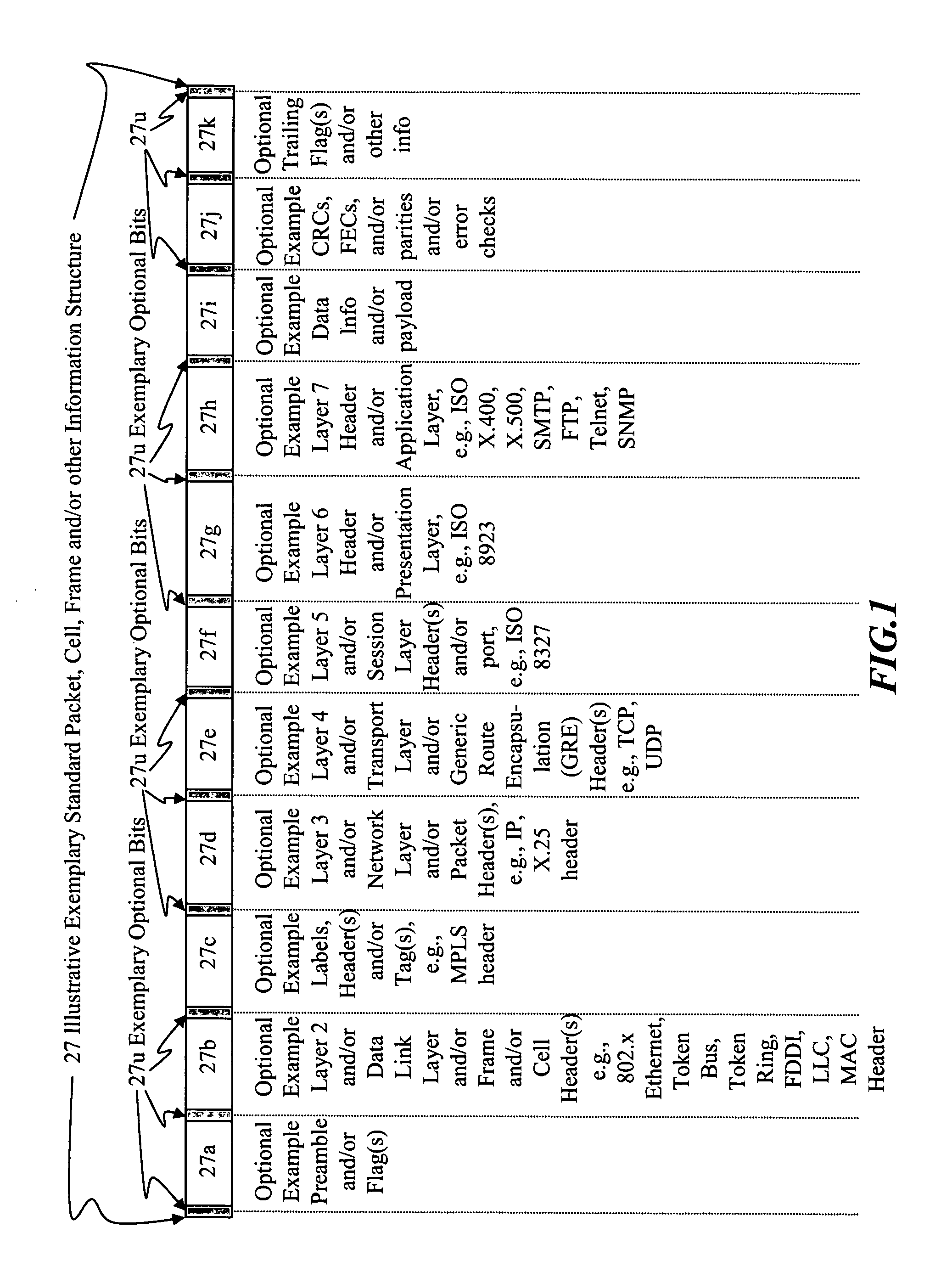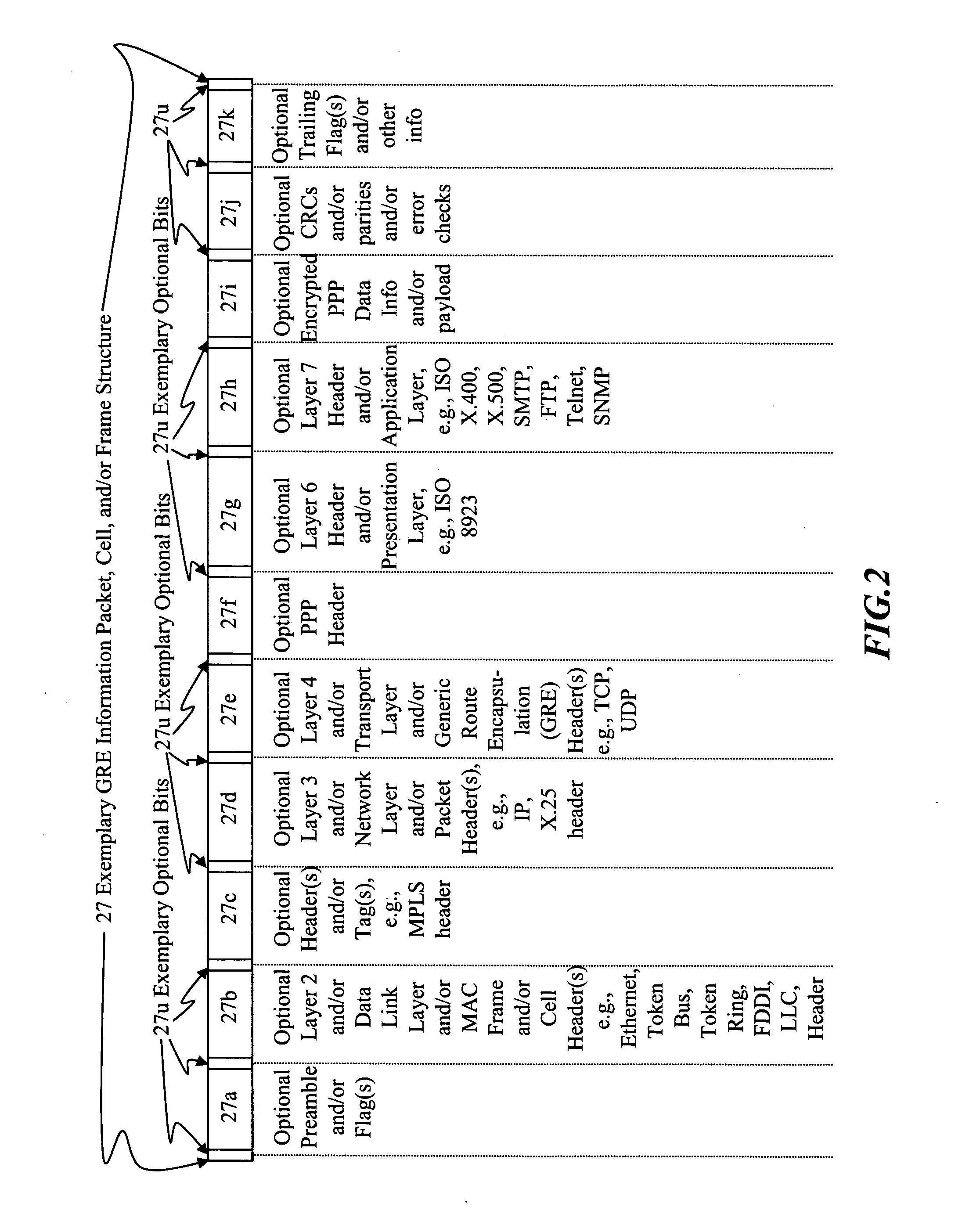Stealth packet switching
a packet switching and packet technology, applied in the field of stealth packet switching, can solve the problems of affecting the security of the network, and/or frame invalidation, etc., and achieve the effects of enhancing network security, low probability of intercepting, and low probability of detection
- Summary
- Abstract
- Description
- Claims
- Application Information
AI Technical Summary
Benefits of technology
Problems solved by technology
Method used
Image
Examples
Embodiment Construction
[0110] I. Rule Violation aspects—Stealth packets and stealth packet switching may comprise rule violation(s). Rule violations may cause errors, faults, and / or other inabilities in network devices, elements, methods, networks, architectures, network analysis, network management, network monitoring, network billing, and / or other network equipment and / or network functions to correctly analyze, understand, and / or operate.
[0111] Intentional, purposeful, planned, premeditated, deliberate, and / or calculated rule violations may be used to provide stealth packets, stealth packet functionality, and / or other means and / or methods which will cause information and / or methods to be invisible, unseen, ignored, seen as noise, thrown away, and / or discarded by normally functioning network equipment and / or methods.
[0112] However, stealth packets and / or stealth packet technology may be seen and / or analyzed by correctly designed stealth-packet equipment, which can intercept, detect, correctly interpret...
PUM
 Login to View More
Login to View More Abstract
Description
Claims
Application Information
 Login to View More
Login to View More - R&D
- Intellectual Property
- Life Sciences
- Materials
- Tech Scout
- Unparalleled Data Quality
- Higher Quality Content
- 60% Fewer Hallucinations
Browse by: Latest US Patents, China's latest patents, Technical Efficacy Thesaurus, Application Domain, Technology Topic, Popular Technical Reports.
© 2025 PatSnap. All rights reserved.Legal|Privacy policy|Modern Slavery Act Transparency Statement|Sitemap|About US| Contact US: help@patsnap.com



